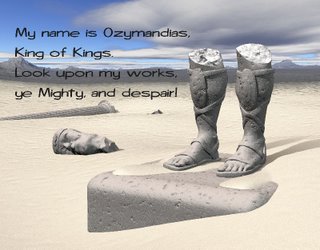Themes of the Poem:
American haiku: Carl Sandburg’s “Fog” is not a traditional haiku, as it extends the length of the haiku from 3 lines to 6 lines. However, it does bear remarkable similarities with the American form of the haiku, as used by such poets as Ezra Pond in “In a Station of the Metro”. It uses a concrete image of the natural world to describe an aspect of the life of common people in the modernist era, and it does so by using the device of the extended metaphor. Pound had compared the faces of the people he had seen in an underground metro station with the white petals on the black bough of a tree. He had made this comparison to show that those faces were not communicating with each other and so they were spectral and ghostly, and therefore, he had aptly expressed the solitude and anomie of the modernist era. “Fog” was written around the same time. Here the poet compares the movement of fog with that of a cat, since both movements are silent and mysterious. Hence, this poem can appropriately be called an American haiku as Sandburg himself had called it.
Fog as lack of clarity: A fog consists of water particles suspended in air. Even though these particles are miniscule, they make the air less clear than it would have been in their absence. Hence fog is not transparent, but opaque. As a result of this, human beings find it difficult to see from one side of fog to the other. That is to say, they cannot see what is happening on the other side of the fog. Fog obstructs their vision. That is why it is apt that the fog should be used as a symbol for lack of clarity. The modernist era was like no other era before its time. Technological innovations had transformed the world from railways to telegraph and so on. Yet people were getting more and more lonely. As a result of industrial advancement, man had become alienated from his labour, the products of his labour as well as from others of his kind. The modernist era was a confusing time, and the obstruction of vision caused by fog is an analogue for this situation.
Fog as fear of the unknown: As we have mentioned before, human beings have no way of figuring out what is there on the other side of fog. Hence, fog is what separates us from the unknown. The First World War was the very first time in human history that every single member of the common population felt personally affected by war. It was the first time that so much private property had been destroyed, and the lives of so many hundreds of thousands of young soldiers were lost. Nobody knew what would happen next, or how the war would progress. Hence, this fear loomed large in the minds of the common people at the time when this poem was published. Hence, the image of the fog may have been used by Sandburg to symbolize the fear of the unknown with respect to the First World War.
Fog as impending doom: Fog never announces its arrival. It simply arrives silently and surreptitiously, without anyone coming to know that it is on its way. This is exactly how the First World War had started, with a small incident in a detached part of northern Europe, and this is also how the war was progressing, with each and every nation being drawn in suddenly. Hence, there was a sense of impending doom among the common people at that time, and the fog is an appropriate image to express that.
Tone of the poem Fog by Carl Sandburg
The tone of the poet in this poem is full of stealth and mystery. As he describes the arrival of the fog, he makes it clear that it is not possible to know beforehand about the time at which it might come. It is also equally clear to us that we cannot possibly know how long the fog will stay for, or when it will leave as suddenly as it had come. Therefore, the arrival and the retreat of the fog may seem like a tame enough event, but its unpredictability makes it seem like a hidden threat. The poet is able to hold his readers’ attention and keep them in suspense as well, even though the subject of his poem, as the title tells us, is pretty benign.
Conclusion
“Fog” is a unique poem in many ways. Even though it uses the form of the haiku, it deviates from that form in terms of its length. However, its use of natural and concrete imagery is masterful. The suspense in which it holds us is remarkable. That such a simple and everyday object as fog can be so mysterious is a revelation.
Some online learning platforms provide certifications, while others are designed to simply grow your skills in your personal and professional life. Including Masterclass and Coursera, here are our recommendations for the best online learning platforms you can sign up for today.
The 7 Best Online Learning Platforms of 2022
- Best Overall: Coursera
- Best for Niche Topics: Udemy
- Best for Creative Fields: Skillshare
- Best for Celebrity Lessons: MasterClass
- Best for STEM: EdX
- Best for Career Building: Udacity
- Best for Data Learning: Pluralsight
















